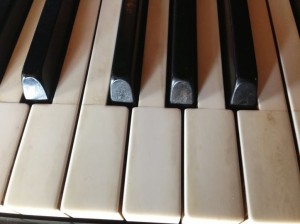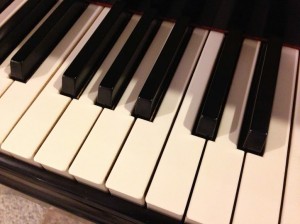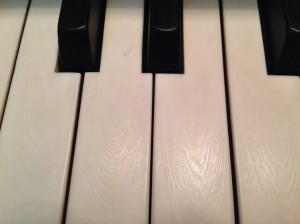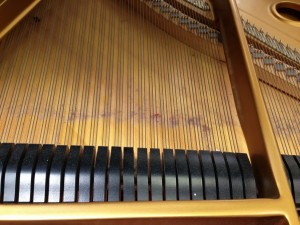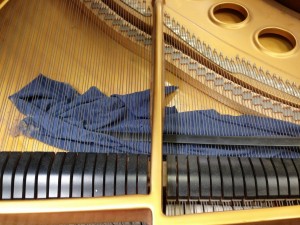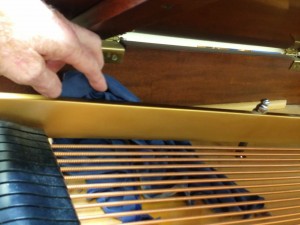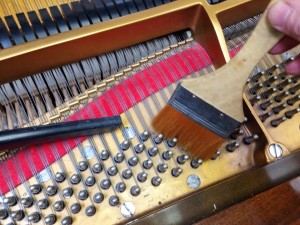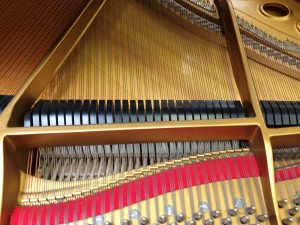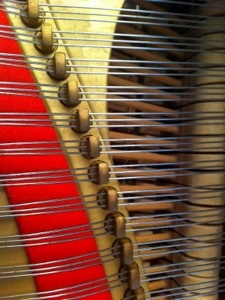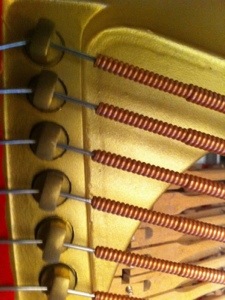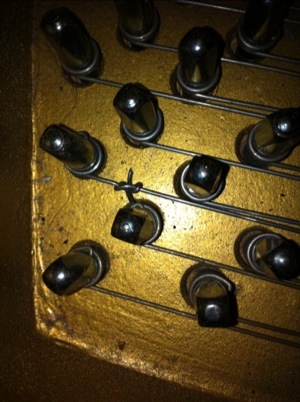For the most part telling if your keys are ivory or plastic is simple. These below are ivory. Notice how there is a seam between the wide part of the key and the narrow part that goes between the sharps. This two piece design was done to keep from wasting precious ivory.
These below are plastic. They are one piece. The newest molded keytops have the front of the key molded into the same piece as the top. Plastics have come a long way and almost all new pianos have plastic keytops.
Exception to the rule. These below are from a Hamburg Steinway which is expensive enough to have one piece ivory keytops. Notice the grain in the keytop, which is not usually present in plastic keytops. There are some plastics which have a fake grain but it is usually very straight and regular.
Chances are if your piano is older than the 1930s, it had ivory keytops, after that are plastic or celluloid. They keytop are just a thin wafer on top of a wooden key, so they can be replaced.

